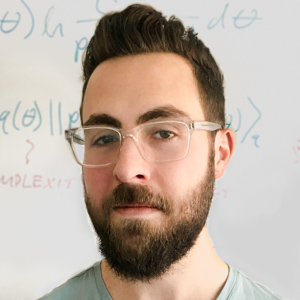Alex Lavin: Launching a path from rocket science to AI
Alexandra George
Jan 6, 2017
At 26, it seems a large feat to say you have already worked for NASA, completed a master’s thesis in collaboration with Blue Origin, and now work as a research engineer at the forefront of artificial intelligence (AI). But for alumnus Alex Lavin, it’s all in a day’s work.
Driven by intellectual curiosity and problem solving, Lavin was named one of Forbes’ 30 Under 30 in Science in 2016 for his significant contributions to science and his love for the field.

Source: Alex Lavin
Lavin is a Senior Research Engineer at Vicarious, a company striving to build an algorithmic architecture for artificial general intelligence: human-level AI. He and the team are currently focused on visual perception problems—like recognition, segmentation, and scene parsing—and their relationship with motor control tasks.
He first became interested in AI while completing a master’s degree in Mechanical Engineering at Carnegie Mellon, where he was inspired by the many cross-disciplinary projects that characterize the university.
“Carnegie Mellon is the most intellectually stimulating environment I've been a part of,” said Lavin. “There's such a wealth of smart people working hard on cool projects. You'd have to go out of your way not to get wrapped up in it.”
Carnegie Mellon is the most intellectually stimulating environment I've been a part of.
Alex Lavin, Senior Research Engineer, Vicarious
With a focus on computational engineering, Lavin tuned the curriculum to what suited his interests while developing relationships with his professors, both great aids to launching his career. What originally attracted Lavin to Carnegie Mellon was the effort led by Red Whittaker to get a rover on the moon. Most of Lavin’s time and efforts while at Carnegie Mellon were dedicated to ‘Andy’, the lunar rover.
“I saw this as an incredible learning opportunity,” Lavin recounts, “I value every minute working with that team. I like to think of Red as a mentor.”
Lavin led the student team working with Professor Whittaker and Astrobotic. Together the team designed, built, and tested the prototype rover for the Google Lunar X-Prize mission. Lavin completed his master’s thesis on finite element-based optimization of spacecraft fuselage structures in collaboration with Blue Origin.
Prior to his time at Carnegie Mellon, Lavin interned with a research team at NASA Ames, where he realized that in order to work on robotics, you need to know software. At Carnegie Mellon he was exposed to the possibilities of software and became enthralled with the world of AI. After graduation, Lavin worked at a startup called Hyperloop Transportation Technologies as a mechanical engineer. He was soon leading the capsule design team, about a dozen engineers around the world.
“Studying finite element analysis (FEA) and computer-aided design (CAD) was very helpful here, particularly with Professor Kenji Shimada as both a professor and my advisor; he's a CAD guru,” said Lavin.
You can learn literally anything you want, given you work at it, so do what you're passionate about.
Alex Lavin, Senior Research Engineer, Vicarious
Yet all the while he was teaching himself AI and programming in order to pivot his career. Lavin soon joined Numenta, where he worked for two years as a software and research engineer developing machine intelligence algorithms derived from the neocortex.
And even after all of his accomplishments on his journey from rocket science to AI, Lavin remains incredibly humble and driven.
“You can learn literally anything you want, given you work at it, so do what you're passionate about. Being named a 30 Under 30 was certainly a surprise, and if anything it's made me work harder, to live up to the hype! I recall seeing Carnegie Mellon alum Matt Rogers speak about starting Nest. He had no clue how to make a thermostat, but he was determined to figure it out. I took that to heart.”